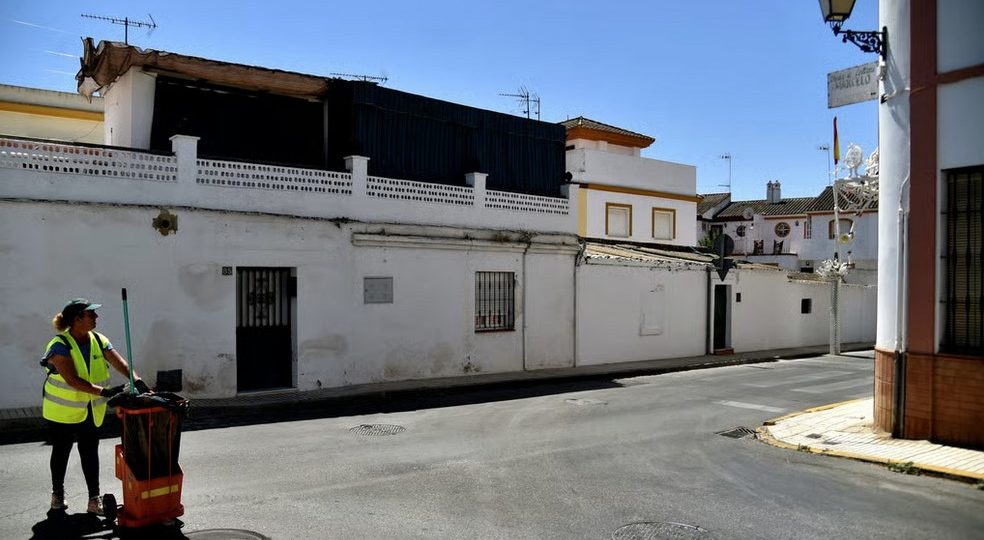Heat waves are part of the new normal, and some cities are better prepared than others.
This article is part of POLITICO’s Global Policy Lab: Living Cities, a collaborative journalism project exploring the future of cities. Sign up here.
Cities are particularly deadly in a heat wave— but fatalities are not inevitable.
As temperature records tumble across the Continent, the death toll from the extreme heat is starting to become apparent. Last Friday, for example, a municipal street cleaner in Madrid died of heat stroke while working outdoors in temperatures over 40 degrees Celsius. On Saturday another worker died after spending several hours in a warehouse where temperatures surpassed 46C.
That fits a pattern from previous extreme heat events where deaths are more likely to occur in urban “heat islands,” as a result of concrete, asphalt and metal structures absorbing heat and radiating it back out. During the 2003 heat wave, Paris experienced mortality rates 142 percent higher than the number usually expected between July and September.
“The accumulation of warmth in heat islands is so intense — and the materials’ release of heat is so slow — that these areas can’t manage to cool down at night,” said Birgit Georgi, a climate adaptation expert who advises the EU’s Urbact program. “As a result, people living in these areas have to deal with constant, unbearably high temperatures.”
If city dwellers are most at risk during a heat wave, not all cities are equally dangerous.
“People living in cities that have invested in green infrastructure — parks and gardens, green façades, sustainable cooling and water management strategies — are less likely to be affected,” said Georgi.
Vienna is ahead of most European cities in enacting changes to mitigate the effects of extreme heat. It first tackled the threat in a climate plan developed in 1999. And in 2018, it became one of Europe’s first cities to execute a strategy to identify and combat urban heat.
“We knew Vienna was likely to be hit hard by the climate crisis because of its geographic situation, with scientists predicting temperatures would rise by five to six degrees within the next two decades,” said Jürgen Czernohorszky, the city’s executive councilor for climate. “We’re using our planning scheme to work with districts on a transition aimed at preventing heat islands.”
The municipal government’s heat strategy includes subsidies for green roofs and façades as well as targeted investments in public infrastructure. These range from a system of mist sprinklers that are activated whenever it gets hot; a new system of bike routes to take more heat-producing cars off the road; and a commitment to plant 4,500 new trees every year.
The city has also opted to hold on to existing infrastructure that is now proving useful: Vienna’s extensive network of municipal pools built by the city in the 1920s, for example, means residents are never too far from spots where they can go for a refreshing dip. And while many cities got rid of public drinking fountains, there are over 1,000 in the Austrian capital.
Going green
Other cites are following suit. In 2019, Paris unveiled its “cool island” network of parks, museums, public buildings and places of worship where residents can go to seek refuge on hot days. Nearly all Parisians now live within seven minutes of these spots, which they can locate with a free app.

Local leaders in the German cities of Nuremberg and Mainz have attempted to slash the heat generated by the tram lines crisscrossing their cities by covering them over with grass.
Madrid’s municipal strategy, passed in 2019, focused on the expansion of tree cover throughout the city and the creation of a new 75-kilometer-long green belt that stretches around the city. Mariano Fuentes, the city’s urban development alderman, said thermographic images showed that ground temperature in nearby areas had been reduced by 2C in just two years.
“Within the city we’ve phased out the use of asphalt on the streets and opted for less bituminous materials that don’t absorb as much heat,” said Fuentes. “[We’ve] invested over €48 million to green vacant lots, established schemes to incentivize private investment in green roofs and facades, and encouraged the construction of near zero-energy buildings.”
During the current heat wave, Fuentes said the city had opened climate shelters in air-conditioned public libraries and community centers and set up an app to facilitate quicker access to Madrid’s heavily subsidized municipal pools.
“By letting people buy those tickets online we’re saving them 10 to 15 minutes waiting in line in the sun, which can have an impact when it’s this hot,” he added.
In response to the heat-related death of the municipal street cleaner on Friday, Fuentes said his centrist Ciudadanos party would also seek to submit a motion in Madrid’s city assembly this week asking that a new protocol be established to ensure public employees are not obliged to work in extreme conditions. “It’s not acceptable to have someone working outdoors on an afternoon when the temperature is above 42 degrees,” he said.
The frontline worker’s death highlights that social class is a significant risk factor when cities experience extreme heat. The historic neglect of urban planning in lower-income districts can often mean their residents have limited access to properly insulated housing, green spaces and public infrastructure like air-conditioned libraries or pools.
Epidemiologist Julio Díaz, director of the Reference Unit on Climate Change, Health and Urban Environment at Spain’s School of National Health said analysis showed heat-related health impacts were more pronounced in lower-income districts in Madrid.
“Enduring a heat wave in an air-conditioned chalet with a swimming pool is not the same as enduring it in a room with five people and a single window as the only source of fresh air. It is evident that social inequalities have a weight. You’re more likely to die as a result of your postal code than because of your genetic background,” he said.
Fuentes argues that although all European cities are now dealing with soaring temperatures, EU leaders need to be more aware of the impact extreme heat is having on urban centers in the south.
“Continental cities are not facing the same threats as Mediterranean ones,” he said. “Up there they have a devastating heat wave from time to time: Here they are already much more frequent and they are only going to get more intense.”
That means urban heat needs to be included in the “political conversation” at the European level, he said. “If we want our cities to be resilient we’re all going to have much more ambitious in combatting this threat.”










